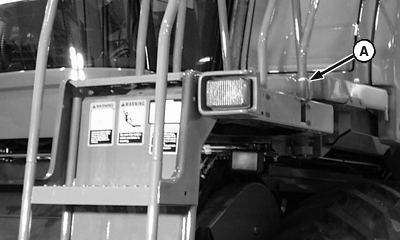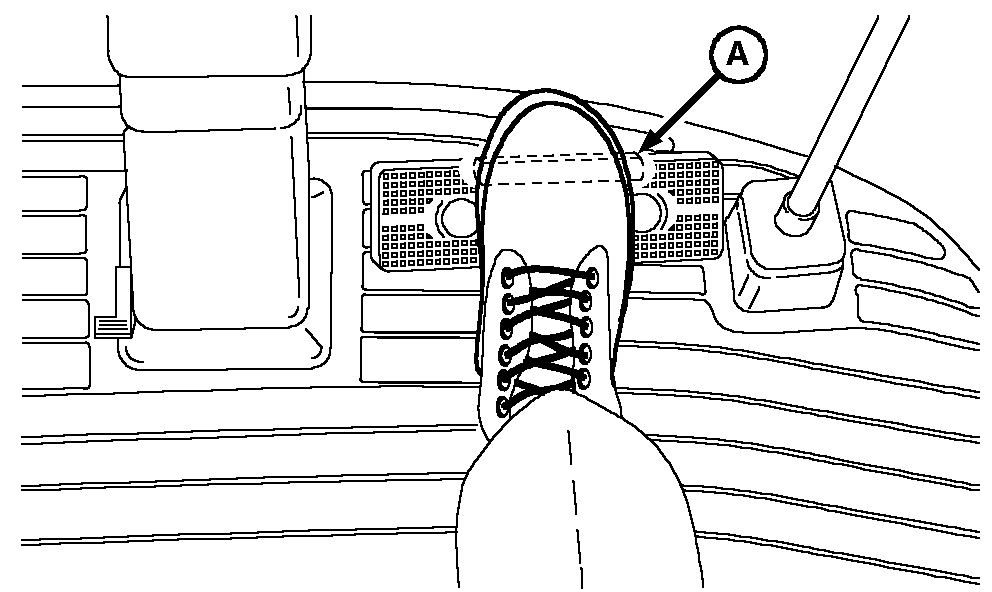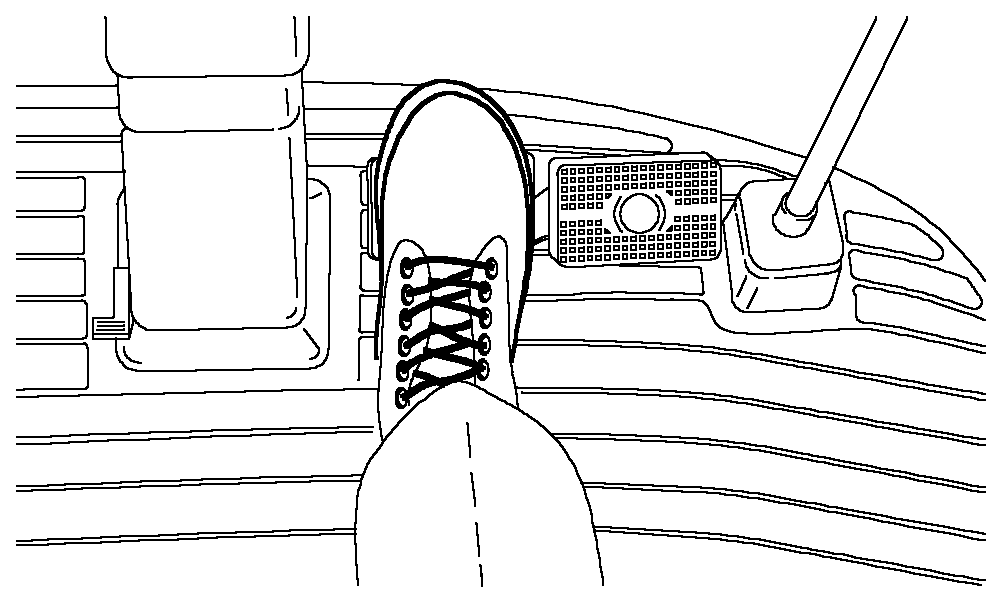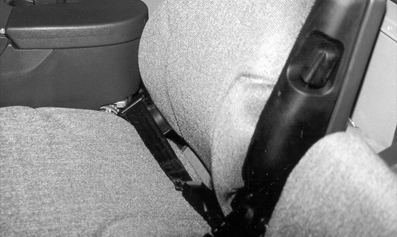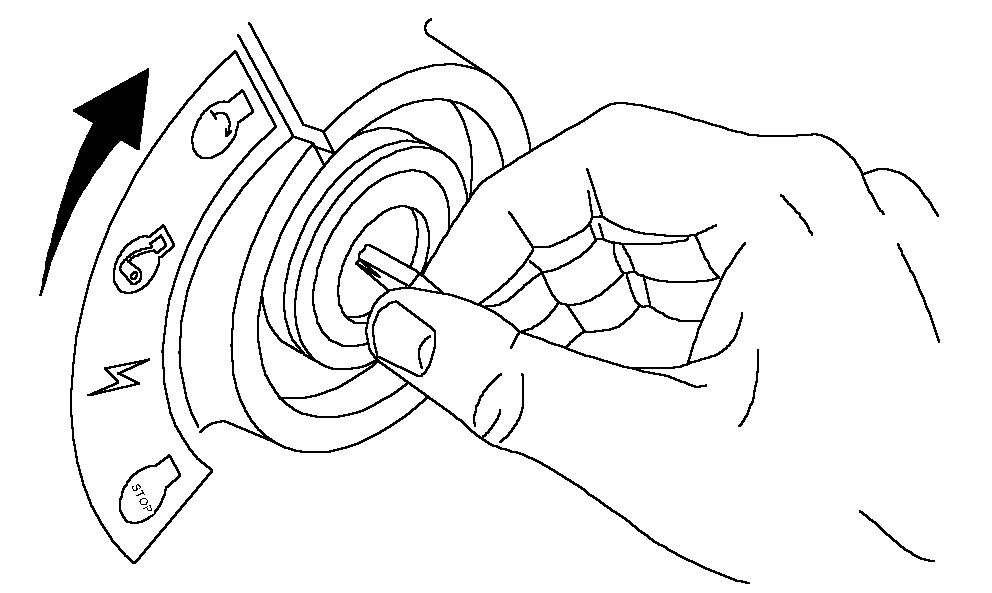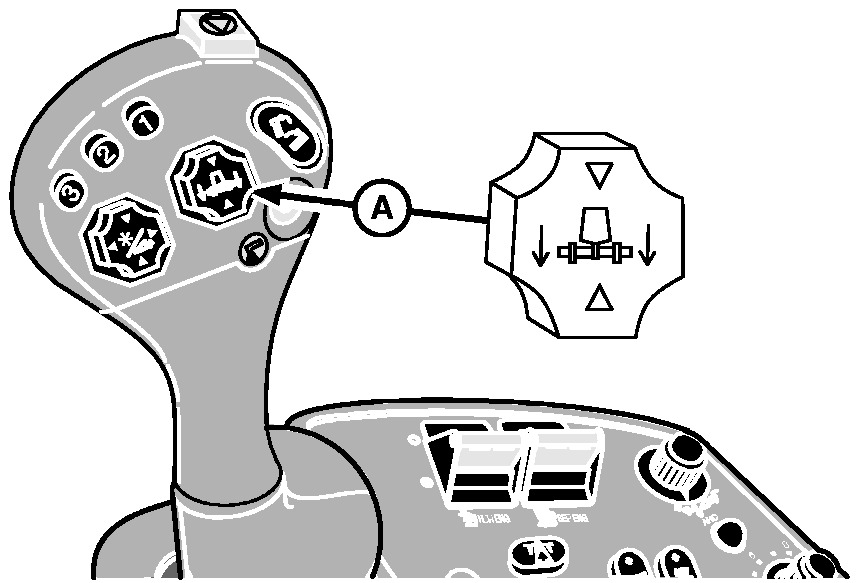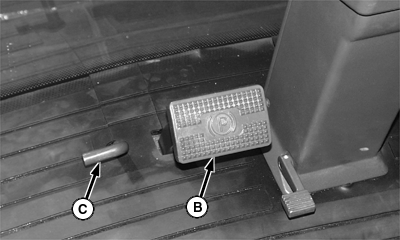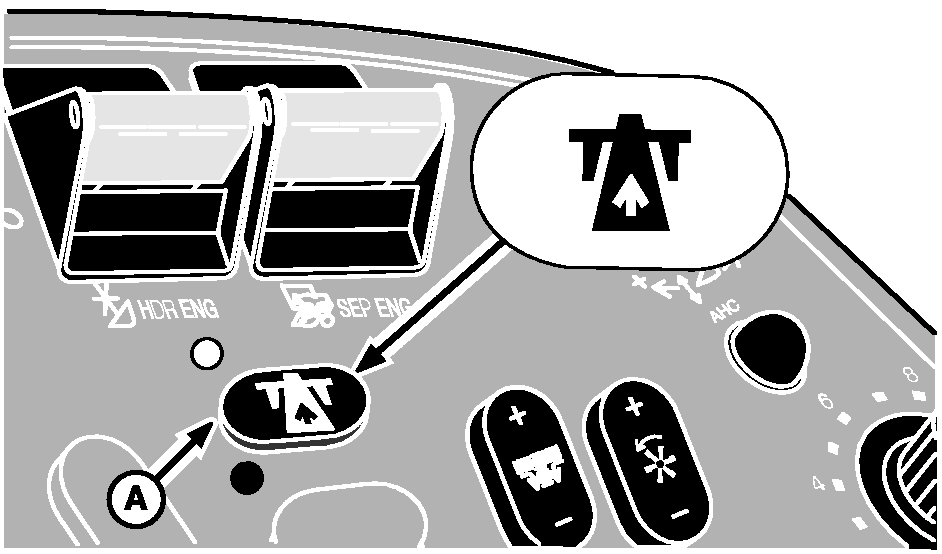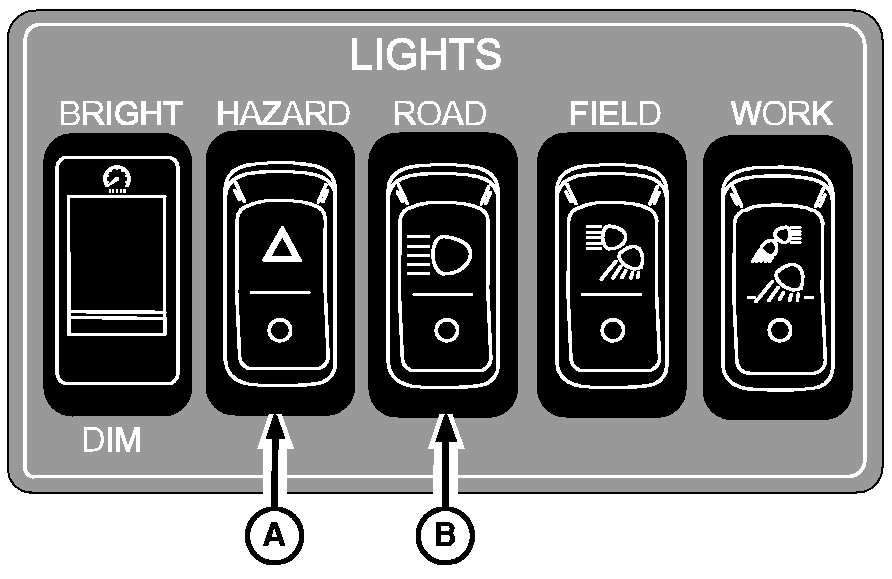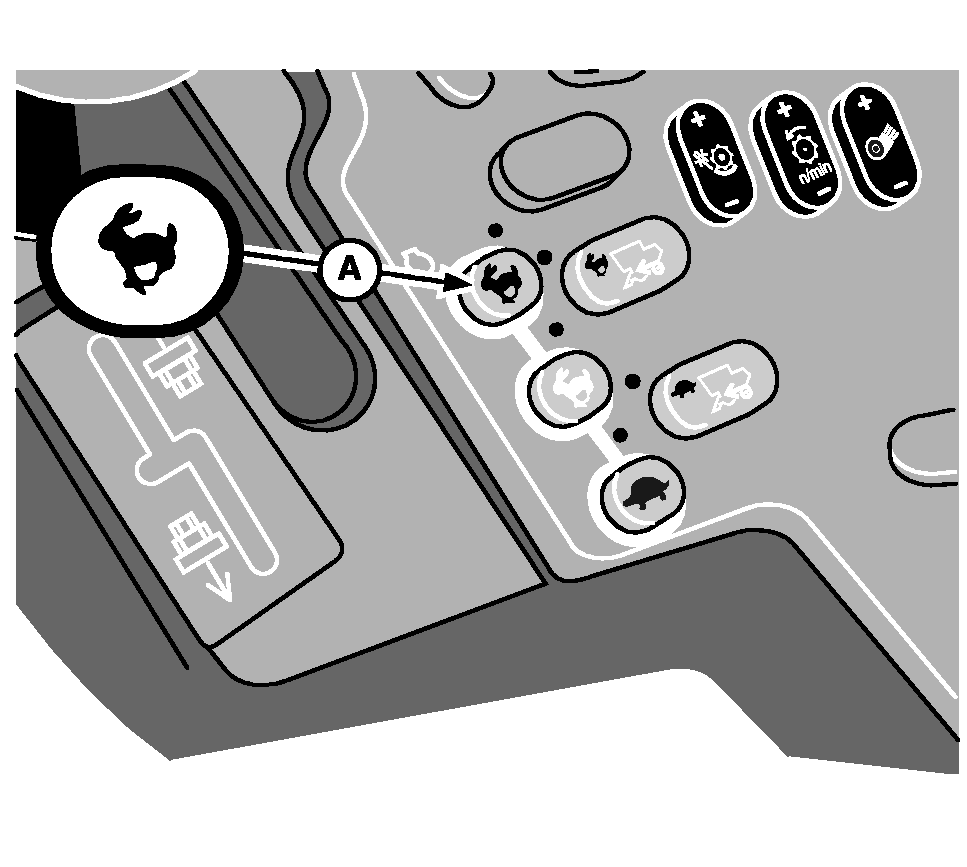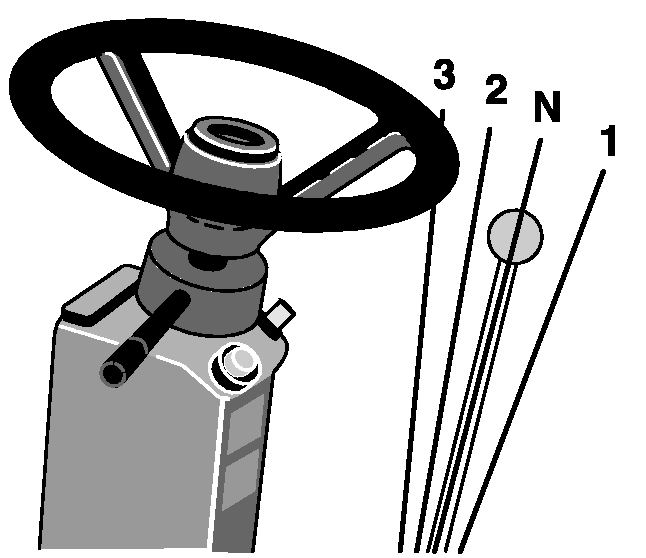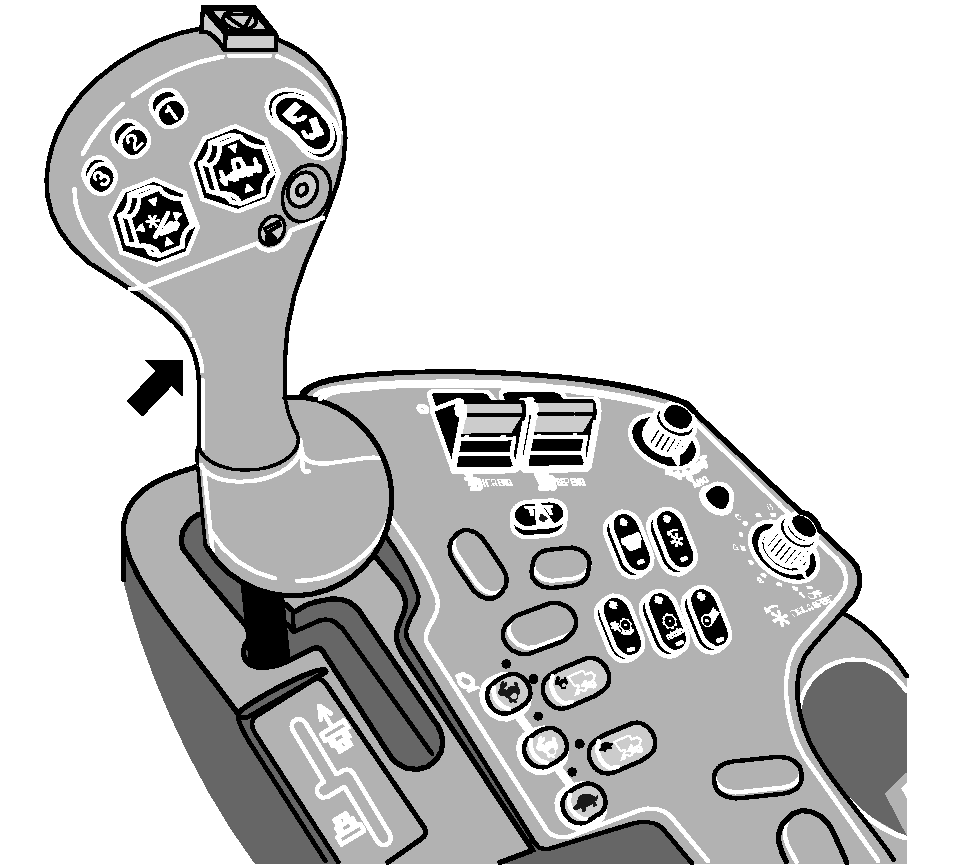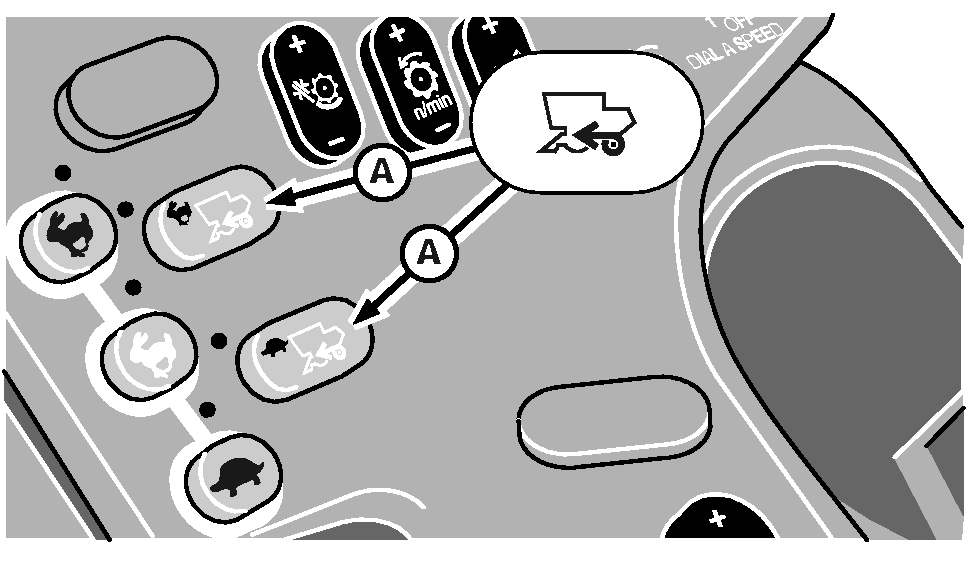Driving the Combine on Roads
IMPORTANT: Travel at a reasonable speed for road or field conditions. Never transport on the road with grain in the tank. Always use warning lights. Follow local regulations for equipment size, lighting and marking before driving on public roadways. NOTE: For machines with long 1390 mm (55 in) ladder extension the ladder can not be positioned in the full forward position. A transport position 9° out from full forward has been provided. (See CAB LADDER POSITIONS). 1. Use lever (A) to unlock ladder and swing to the full forward position. |
|
OUO6075,000011B -19-30NOV00-1/9 |
|
2. Lock brake pedals together with lock (A) when driving on roads. Leave pedals unlocked for field operation.
|
|
OUO6075,000011B -19-30NOV00-2/9 |
|
3. Fasten seat belt. |
|
OUO6075,000011B -19-30NOV00-3/9 |
|
4. Sound horn and start engine. Use cold weather starting aid if needed. |
|
OUO6075,000011B -19-30NOV00-4/9 |
|
5. Raise header with header switch (A). 6. Disengage manual parking brake (B) with pedal (C).
|
|
OUO6075,000011B -19-30NOV00-5/9 |
|
7. Engage road transport disconnect switch (A).
|
|
OUO6075,000011B -19-30NOV00-6/9 |
|
NOTE: For machines with long 1390 mm (55 in) ladder extension the ladder can not be positioned in the full forward position. A transport position 9° out from full forward has been provided. (See CAB LADDER POSITIONS). 8. Turn hazard light switch (A) on for both daytime and nighttime road travel. Turn on road lights (B) for nighttime travel. Warning lights automatically operate when the hazard lights are on. NOTE: Turn signal lights on the steering column burn steadily to indicate a turn. 9. Use turn signals as needed. They are not self cancelling. |
|
OUO6075,000011B -19-30NOV00-7/9 |
|
10. Press engine speed switch (A) for maximum engine speed. NOTE: For field operation, select a gear according to working conditions. 11. Engage 3rd gear for road travel.
12. Shift gears and slowly move multi-function (hydro) handle forward or rearward. When coming to the top of a hill, pull back on the hydro lever before starting down the other side.
|
|
OUO6075,000011B -19-30NOV00-8/9 |
|
IMPORTANT: To prevent damage to the hydrostatic system, do not switch 4-Wheel Drive on or off while driving the combine in third gear (road gear) at maximum travel speed. Reduce speed to less than 1/2 of maximum. Turn 4-wheel drive off before going down a steep grade. When diving the combine in conditions which cause high pressure in the hydrostatic system and the combine slows down or stops, move hydrostatic control lever to neutral and shift to a lower gear. It is ok to switch between low (turtle) and high (rabbit) settings on the "GO" while harvesting. 13. To engage 4-wheel drive press switch (A). It is not necessary to engage the 4-wheel drive except for additional traction in muddy conditions. Press the bottom (turtle) switch when maximum traction is required or top (rabbit) switch when high speed is needed. It is NORMAL for front wheels to lose traction and spin before the rear wheels in most conditions. When this occurs, shift the transmission from first gear to second gear. In very muddy conditions, it may be necessary to apply both brakes momentarily to increase hydrostatic pressure to the 4-wheel drive motors. If rear wheels are spinning excessively, shift from second gear to first gear and press the bottom (turtle) switch for maximum traction. |
|
OUO6075,000011B -19-30NOV00-9/9 |
 CAUTION:
Swing ladder to the full forward as possible position to reduce combine width and to orient warning light toward oncoming motorists.
CAUTION:
Swing ladder to the full forward as possible position to reduce combine width and to orient warning light toward oncoming motorists.
